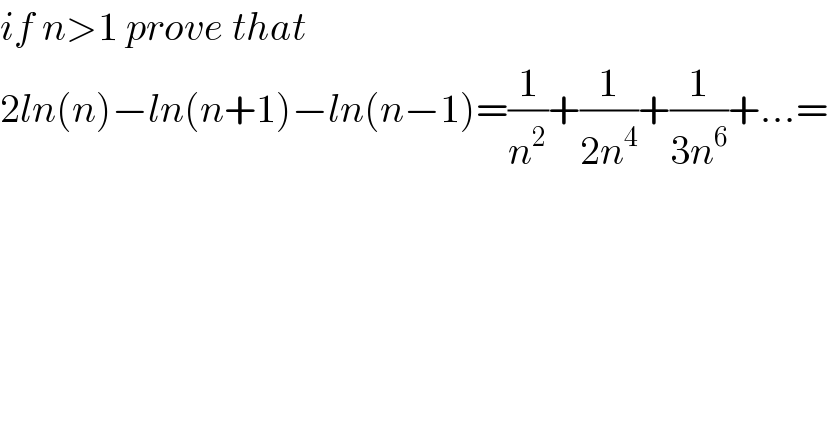
Question and Answers Forum
Question Number 79625 by M±th+et£s last updated on 26/Jan/20

Answered by mind is power last updated on 27/Jan/20
![⇔ln((n^2 /(n^2 −1)))=ln((1/(1−(1/n^2 ))))=−ln(1−(1/n^2 )) ∀n∈N−{0,1} (1/n)<1⇒(1/n^2 )<1 −ln(1−x)=Σ_(k≥1) (x^k /k),∀x∈]−1,1[,x=(1/n^2 )⇒ −ln(1−(1/n^2 ))=Σ_(k≥1) (1/(n^(2k) .k))=(1/n^2 )+(1/(2n^4 ))+..........](Q79655.png)
| ||
Question and Answers Forum | ||
Question Number 79625 by M±th+et£s last updated on 26/Jan/20 | ||
 | ||
Answered by mind is power last updated on 27/Jan/20 | ||
![⇔ln((n^2 /(n^2 −1)))=ln((1/(1−(1/n^2 ))))=−ln(1−(1/n^2 )) ∀n∈N−{0,1} (1/n)<1⇒(1/n^2 )<1 −ln(1−x)=Σ_(k≥1) (x^k /k),∀x∈]−1,1[,x=(1/n^2 )⇒ −ln(1−(1/n^2 ))=Σ_(k≥1) (1/(n^(2k) .k))=(1/n^2 )+(1/(2n^4 ))+..........](Q79655.png) | ||
| ||